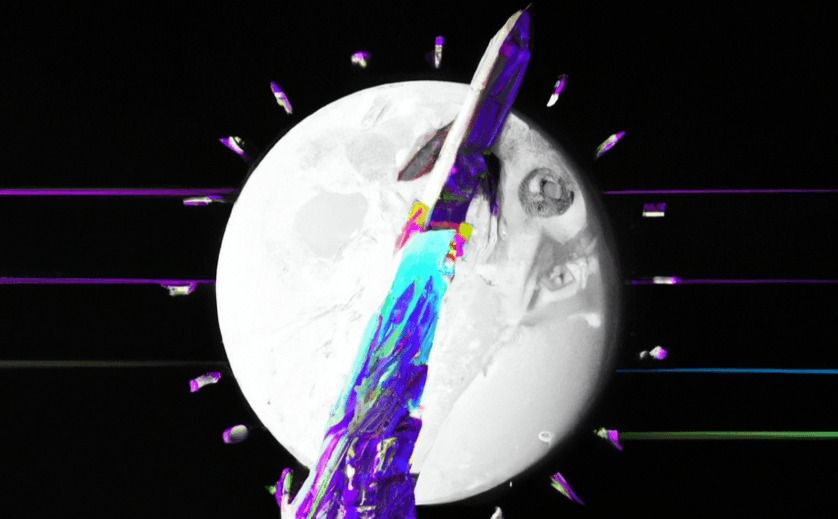Blockchain
Research
Market Security
Is Web3/5/X™ the Decentralized Destiny of the Internet?

Introduction
The online world is constantly evolving. Even though new tools are continually developed to make each digital era easier and more intuitive, this ever-shifting landscape remains daunting to navigate. But if we want to predict the next big change, all we need is a peek into the past. A thorough examination of the history of the internet shows us clear patterns, which in turn become our key to decoding the future.
That future is Web3/5/X™
Web1.0- The Origins
If we go back to the very beginning, the Web (now known as Web1.0) was little more than a repository of information. This alone was an incredible tool for its time, but while everyone on the internet could access its content, very few could actually add to it. In order to become the revolutionary technology that we use today, Web1.0 needed to become something more than just a digital storage space. That’s where Web2.0 came in with its model of user participation.
Web2.0- Setting the Tone
Web2.0 added crucial functionality that allowed the internet to develop from a platform that only provided information into one that also facilitated communication and connection. This is what separated it from all the systems that came before it. People could now freely interact within the space, with the ability to add content instead of just consuming it. Under Web2.0, we saw the birth of incredible new things such as social platforms with instant feedback loops, easy cross-border communications, and digital stores with access to worldwide customer bases. But despite this unprecedented freedom, the Web was still subject to the same unbalanced power structures that plagued the analog world. The incredible new tools that empowered users were still owned and operated by faceless monolithic bodies.
Web3.0- The Start of a Revolution
With the problem of accessibility addressed, the Web now needs to confront its next major obstacle- ownership of data. The same institutions that provide all the incredible new services in Web2.0 also exercise control over their users’ information. While these entities are only supposed to be the custodians of this data, in reality they can (and many of them do) use it for their own benefit, exposing a glaring problem in the current state of the internet.
On top of this, all transactions across Web2.0 have to be executed through intermediaries. Such a system facilitates an unhealthy centralization of power. Organizations can impose arbitrary rules whenever they want, making the “freedom” of Web2.0 seem hollow.
This is where Web3.0 steps in with its major reforms. It introduces concepts such as blockchains and distributed ledger technology, which will tackle the issues that have plagued the online world for over three decades. With its help, user data can now be handled without third-party overseers.
Switching over to a distributed data handling system also opens up incredible possibilities in the fields of AI, machine learning, 3D visualization, and human-computer interactions. But the main driving force behind developing Web3.0 is still the same as that which led to the birth of Web2.0- a desire to increase individual autonomy on the internet.
WebX.0- What the Future Holds
Since every stage in the evolution of the Web has been marked by the need to hand over more power to the individual user, it’s only logical to conclude that the future will be determined on the same grounds. However, the next steps are more than simple, incremental upgrades. They will be the culmination of everything that came before them. This future takes shape in the form of Web3/5/X™.
Despite the breakthroughs it provides, Web3.0 is not yet a perfect incarnation of a decentralized system. One of its major problems is the sheer number of companies and products jostling for space in the same category. With innumerable blockchains already on the market, and many more being created every day, it’s difficult for developers to create tools and applications that work universally. Web3/5/X™ seeks to promote a blockchain-agnostic environment that can mitigate this issue. Moreover, the development of decentralized identifiers and web nodes on Web3/5/X™ double down on the effort to create unique online identities that are not dependent on external authorities or government bodies.
Conclusion
The idea of a truly free internet is no longer held out of reach by corporate monopolization and authoritarian scrutiny. Since the very first stages of Web evolution, every step we’ve taken has been leading to this moment. Web1.0 gave birth to an information highway with unlimited potential, while Web2.0 added a level of user participation that bridged the world in the blink of an eye. Then along came Web3.0 in an attempt to realize the dream of an internet that belongs to its users, but it still needed one more technological leap to actually achieve that. Web3/5/X™ is that final piece to the evolutionary puzzle. From day one, Web3/5/X™ is what the internet was destined to be. What we are about to witness now is the rise of a decentralized space that shall never compromise personal autonomy.
Legal
Terms of Service© 2022 PyxelChain. All Rights Reserved.
PyxelChain emphasizes customer privacy and control through the use of blockchain technology. We are here to help educate individuals on the safest methods of utilizing crypto and what it means to "decentralize" the practices of the Internet.
